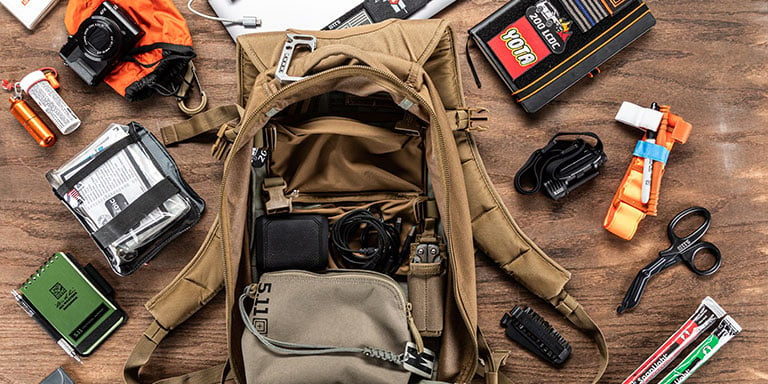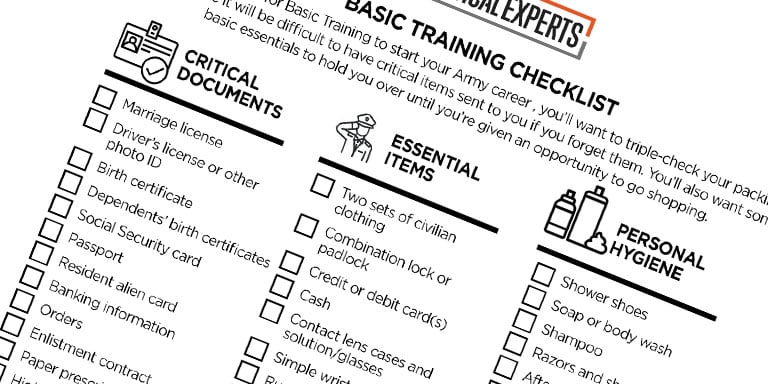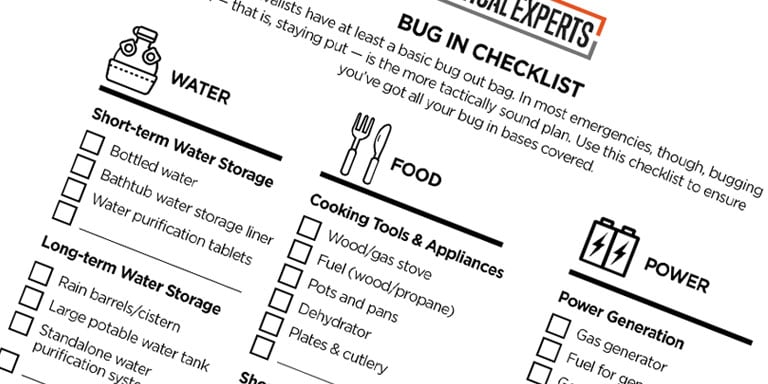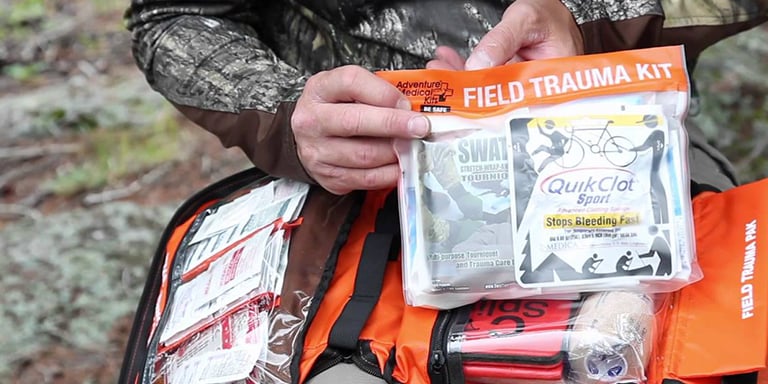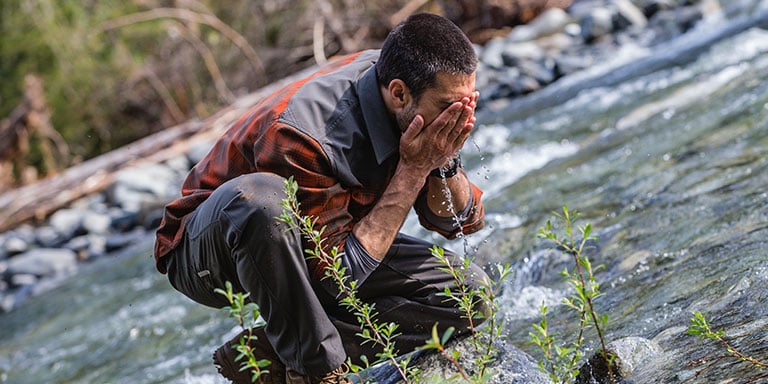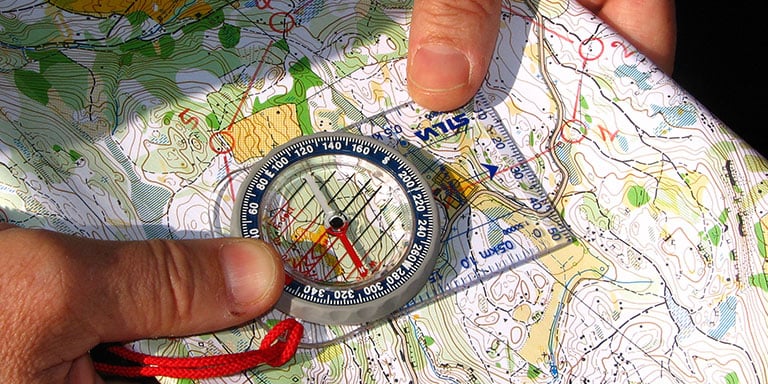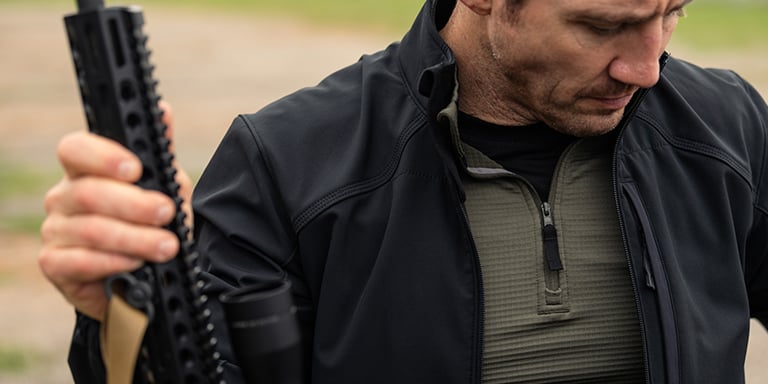
Protecting yourself from the freezing cold isn't as simple as just throwing on the heaviest winter coat you can find. Instead, you need to be able to add or remove clothing based on how precipitation, temperatures and your level of exertion change throughout the day. This process is called layering, and when you know how to do it correctly, you can be ready for any kind of weather conditions.
A typical layered clothing system consists of a base layer to wick sweat away from the skin, a middle layer to retain body heat, and an outer layer (called a shell) to offer protection from the elements. In this guide, we'll cover every aspect of apparel layering, including the materials common to each layer, which layers are suited best to which conditions, and even some additional tools you have at your disposal to stay protected against fall and winter weather.
Base Layers
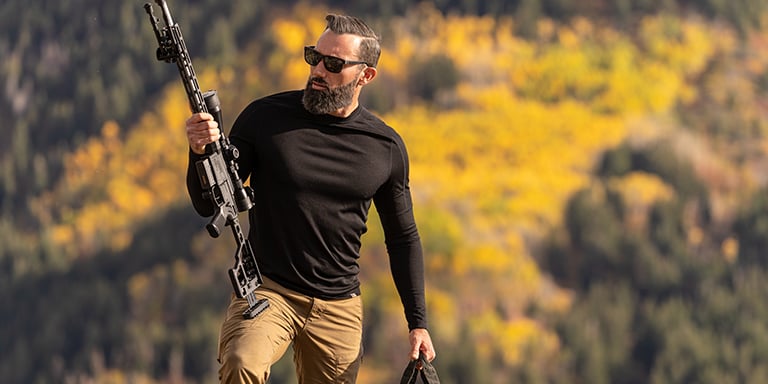
When dressing in layers, it's a good idea to start at the bottom and work your way up. In this case, the bottom of the three-layer system is the base layer. Think of a base layer as a second skin — it should be lightweight, snug and comfortable while allowing maximum mobility. You shouldn't even realize it's there.
From a functionality perspective, base layers work to wick sweat away from your skin, moving it outward and allowing it to evaporate. Sweating in cold weather can lead to hypothermia, so finding the right base layer is vital to moisture management during high-intensity activities.
One of the most important aspects of a base layer is the material from which it's made. The right materials will wick sweat away, keeping you warm, comfortable and dry. Base layer materials can come from one of two categories: man-made synthetics or natural fibers.
Synthetic Materials
The two most common types of synthetic materials used in making base layers are polyester and nylon. First and foremost, they do the primary function of a base layer quite well — they wick sweat from your skin. On top of that, they dry fast, and they're quite durable as well.
You're probably familiar with what is arguably the biggest con of wearing a polyester or nylon base layer: they have noticeable odor retention. Despite the fact that they wick and evaporate sweat rather well, the odor left behind tends to stick around until you've had a chance to wash your clothes. Aside from this issue, polyester and nylon base layers are hard to beat.
Natural Fibers
If you prefer something with a bit of a softer touch, merino wool base layers are an excellent choice. Merino wool is different from traditional, itchy wool — it's finer, softer and much more comfortable to wear. It also wicks sweat well, keeps you cool and doesn't have the odor-retention issues that synthetic materials do. If merino wool has one drawback, it's that it's not as durable as other options.
Silk is another popular base layer material. Perhaps its best property is its comfort — it's hard to beat the nice, lightweight feel that silk provides. It's not without its issues, though. As far as base layer materials go, silk tends to be the least efficient in terms of moisture-wicking ability. Like merino wool, it's not quite as durable as synthetic fibers. It also has a tendency to hold in musty smells as sweat builds up.
When searching for a cold-weather base layer, you should completely avoid clothing made from cotton. Cotton retains moisture instead of wicking it away to allow evaporation. As we've mentioned, if you stay covered in sweat in cold weather (even under a middle or outer shell layer), you can become hypothermic very quickly. As a result, it's best to stick with base layers made from polyester, nylon, merino wool or silk (especially in sub-zero temperatures).
Mid-layers
The main function of a mid-layer is to provide insulation. A good mid-layer traps body heat to maintain maximum warmth. Much like base layers, its ability to perform this function comes down to the materials from which it's made. And, much like base layers, there are a few options available with different advantages and caveats.
Fleece
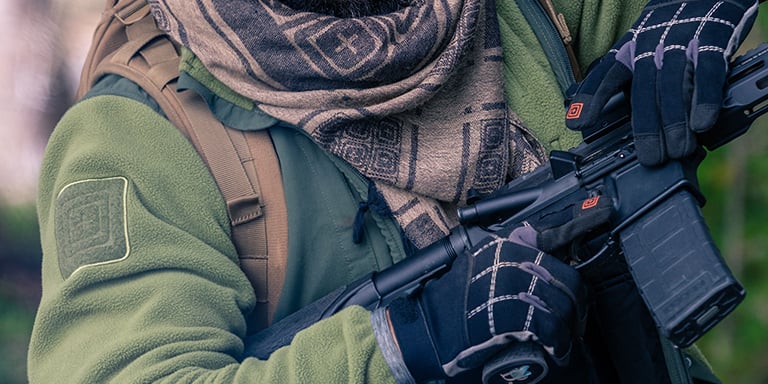
You probably know fleece for its soft, fuzzy texture. It's also famously warm — that's what makes it a great middle layer. Even within the mid-layer category, fleece comes in light, middle and heavyweight options, a characteristic that adds to its versatility. Fleece jackets are incredibly breathable, too, which can provide some much-needed ventilation as your activity level ramps up.
This quality isn't necessarily suitable for every environment, though. If you're sedentary and/or if the wind picks up, that cold air will blow right through a fleece middle layer. This problem can be solved with a soft shell or outer layer.
Down
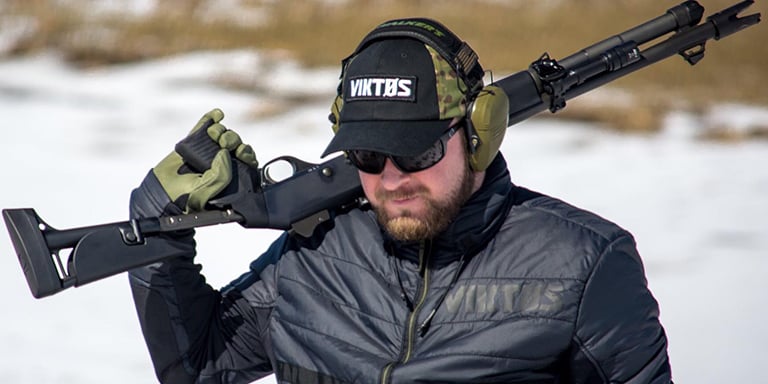
While fleece is recognizable for its fuzzy texture, down is well-known as the material used in puffy jackets (or puffer jackets). It's considered the gold standard of insulating materials, and for good reason: it has the best warmth-to-weight ratio of any material you can find. On top of that, it's ultra-compressible which makes it easy to pack and store.
On the other hand, there are a few major disadvantages you should keep in mind while wearing a down jacket. When down gets wet, it completely loses its insulating capabilities. This is a well-known shortcoming of the material. For this reason, down is usually housed inside a water-resistant shell. You also need to be careful not to overheat and sweat out your base layers while wearing a down jacket. Down is typically best used when you're not very active, or when temperatures are incredibly low.
Synthetics
Just as there are synthetic base layer materials, many mid-layers are made with synthetic insulating materials. They go by a number of proprietary names: PrimaLoft, Thinsulate, Heatseeker and Polarguard are just a few popular examples. Though they're not quite there yet, these synthetic materials are coming much closer to matching down's insulating capabilities and efficiency. They also hold a few major benefits: synthetics are much more durable and can take a lot more abuse than down. They'll also still provide some level of insulation when wet.
Which material should you choose for a middle layer, then? As with anything else, it comes down to preference and circumstances. If you're in a dry, cool climate, down is hard to beat. If the weather is ultra-cold and there's no wind in the forecast, fleece is a top choice. If you're expecting precipitation, you might want to go the synthetic route. In milder climates, you may not even need a mid-layer at all. The decision essentially comes down to where you are, how active you plan on being and what the weather is like.
Outer Layers
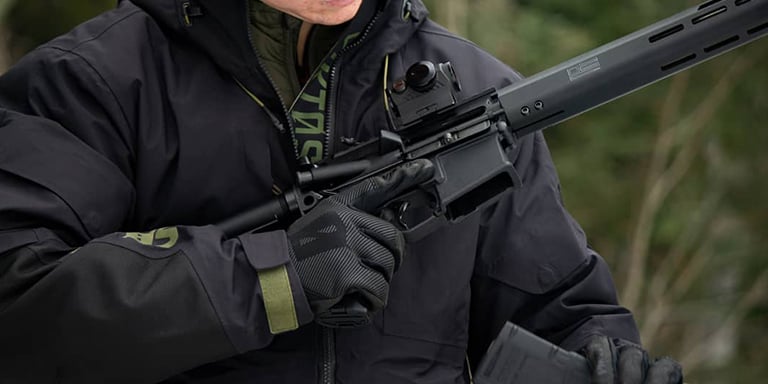
When the weather turns particularly foul, a good outer layer can provide the protection you need from wind and precipitation. Most outer layers both allow sweat and moisture to escape and come with a durable water-repellent (DWR) coating to keep outside water away. Below, we've outlined the most common types of outerwear and the environments to which they're best suited. Remember: outer layers work best when you've chosen the appropriate base and middle layers. Our guide on how to choose tactical outerwear takes a deeper dive into which styles of coats and jackets are tailored to different kinds of duty assignments.
Soft Shells
Soft shells place an emphasis on mobility and breathability. They're a coveted choice for many duty assignments because they're designed for high-intensity tasks. Most soft shells are engineered from stretch fabric (or with stretch fabric panels) for extra comfort and range of movement during aerobic activity. Soft shells do well combining light wind and rain protection with light insulation — they're essentially a two-in-one option that functions well in a variety of environments.
Waterproof Shells
Waterproof shells are good for cold, rainy days on which you don't plan to be active (like spending hours in a deer stand). They're usually made from nylon and feature an added waterproof coating. Due to their lack of breathability, if you wear one of these shells and begin to exert yourself, you'll likely start to sweat quite a bit. This issue can usually be solved by removing your middle layer, though.
The U.S. Army's Extended Cold Weather Clothing System (ECWCS)
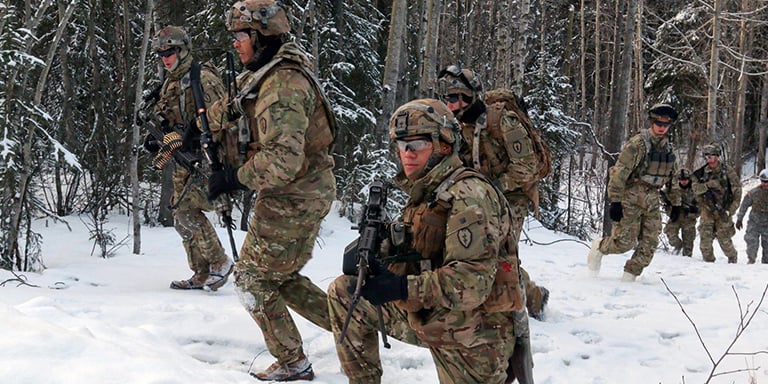
The United States Army's Extended Cold Weather Clothing System is one of the best, most long-standing examples of a layer-based apparel framework done right. Also called ECWCS, the system allows soldiers to adapt to and survive in any climate, from typical winter temperatures to Arctic-like conditions. The latest iteration of the system, Gen III, consists of seven layers, outlined as follows:
Level one includes a lightweight, moisture-wicking undershirt and underwear base layer
Level two includes a midweight, moisture-wicking undershirt and underwear base layer
Level three is a breathable, quick-drying, insulating fleece mid-layer
Level four is a nylon, water and wind-resistant jacket mid-layer
Level five includes a nylon, water-resistant jacket and pants outer layer
Level six includes a GORE-TEX Paclite jacket and pants outer layer
Level seven includes a PrimaLoft Sport parka and pants outer layer
You can see the layering principle at work within the Extended Cold Weather Clothing System. The primary difference between ECWCS and regular civilian clothing is that ECWCS offers much higher levels of protection against the cold than a typical civilian would need (down to -60°F when layered correctly). You can click here to read more about the Extended Cold Weather Clothing System.
Cold Weather Accessories
So far, we've covered the three-layer system at length. While this system does an excellent job at keeping your core warm, you'll still need additional accessories for your extremities. Keep in mind that these garments can also be strategically removed as part of a layering strategy to prevent overheating (for example, removing your beanie and gloves when you start to warm up instead of stopping what you're doing to remove a full layer).
Headwear
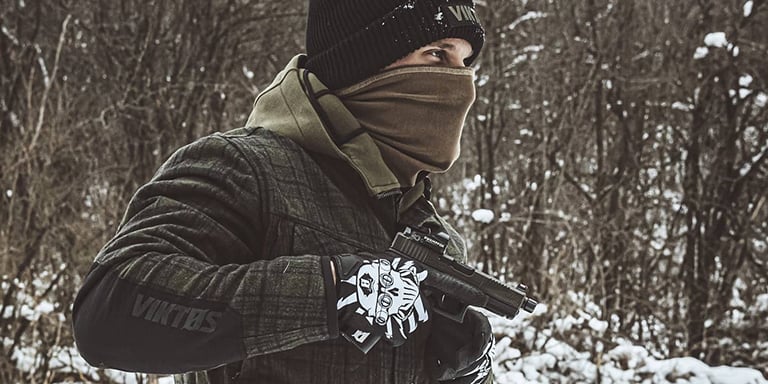
A simple beanie or watch cap can go a long way in protecting your head and ears from frigid temperatures. Oftentimes these pieces of headwear are made from the same kind of insulating materials as base, middle and outer layers, with fleece and polyester making up most beanies and watch caps. You can find more information on choosing the right style in our guide to tactical headwear.
Balaclavas
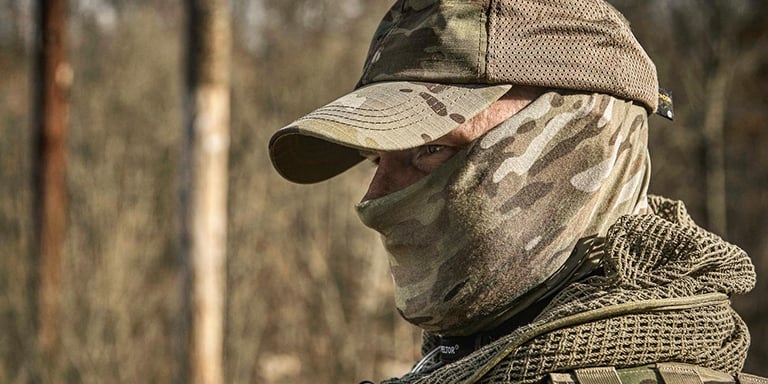
In extremely low temperatures, a balaclava that covers your neck and face may be required to stay comfortable. Balaclavas are also great in conditions that are both cold and windy. These conditions create a phenomenon called windchill that can quickly become dangerous, even if temperatures aren't necessarily all that low.
Gloves
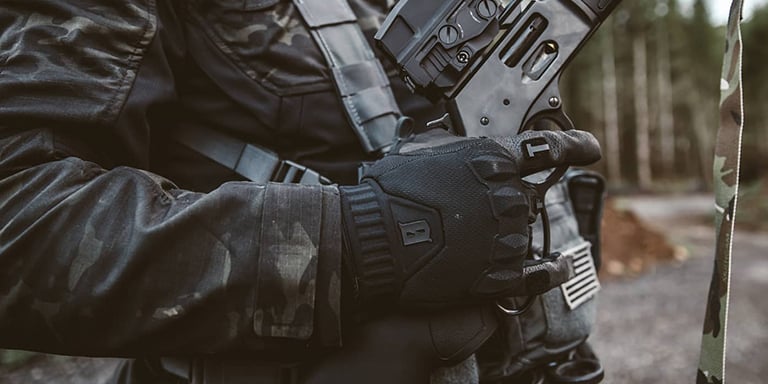
You've probably experienced a time where your fingers got so cold they felt like they were going to fall off (or perhaps you couldn't even feel them at all). That's why it's vital not to forget to pack a pair of warm gloves. They'll keep your fingers plenty warm while allowing you to maintain uninhibited dexterity. Read up on how to choose tactical gloves to ensure you find the perfect pair.
Insulated Footwear
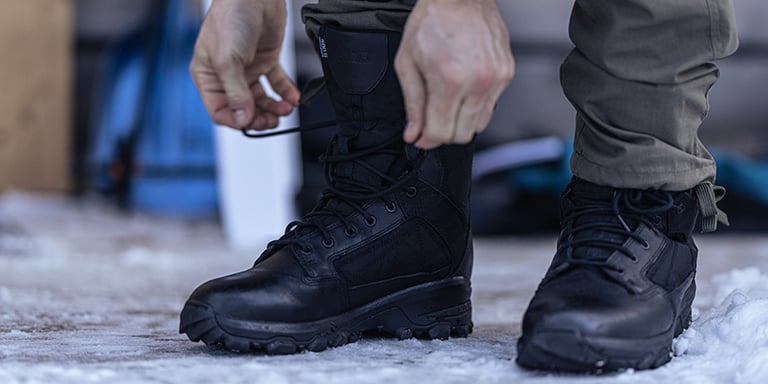
Just like freezing fingers, cold toes can be absolutely debilitating while you're on the job. Investing in the right pair of tactical socks and a great pair of insulated footwear will take care of the problem. You have plenty of options available (arguably an overwhelming amount), so be sure to check out how to choose military boots, how to choose tactical boots and how to choose military and tactical socks for more information.
There's all kinds of gear out there designed to protect you from inclement weather, and layering is an essential part of staying warm. Picking the right base layer, mid-layer and outer layer provides a versatile solution to a range of activity levels and temperatures. The three-layer system lets you add or remove layers as needed to regulate your body temperature and lock in the appropriate amount of body heat.
From there, it's all about protecting the extremities. Headwear, gloves, balaclavas, insulated boots — they all go a long way in keeping warm air in and cold air out. Armed with the right knowledge and the right apparel, you can stay prepared for outdoor assignments on cold days and keep yourself warm, dry and ready to go. For additional information on how to choose tactical outerwear, be sure to read our article here.
Did you find this article helpful?


